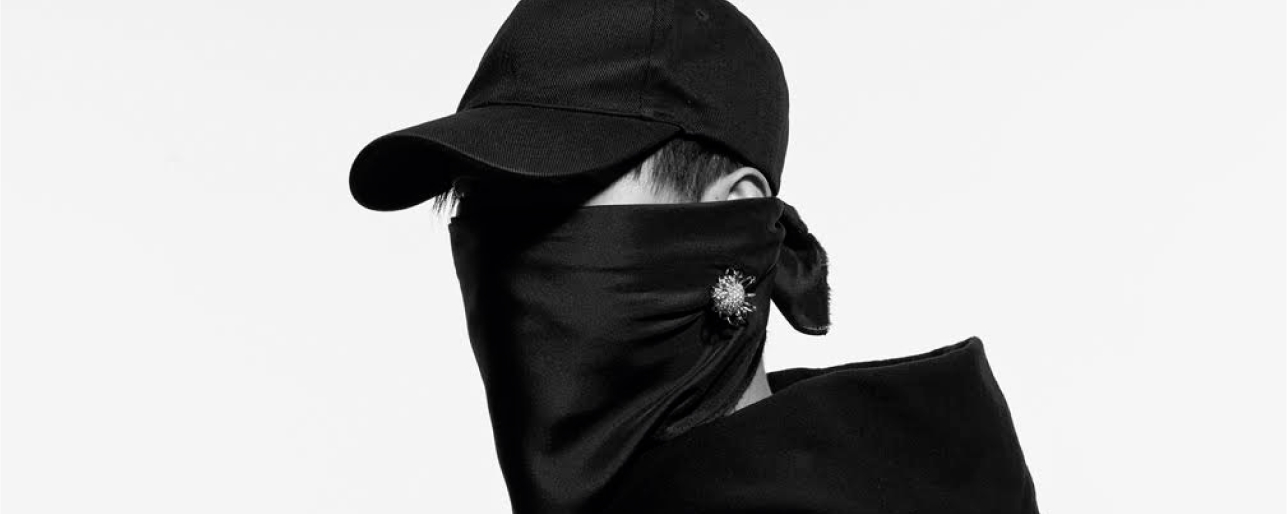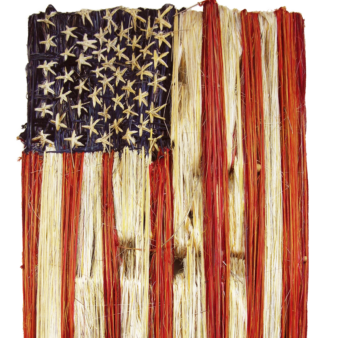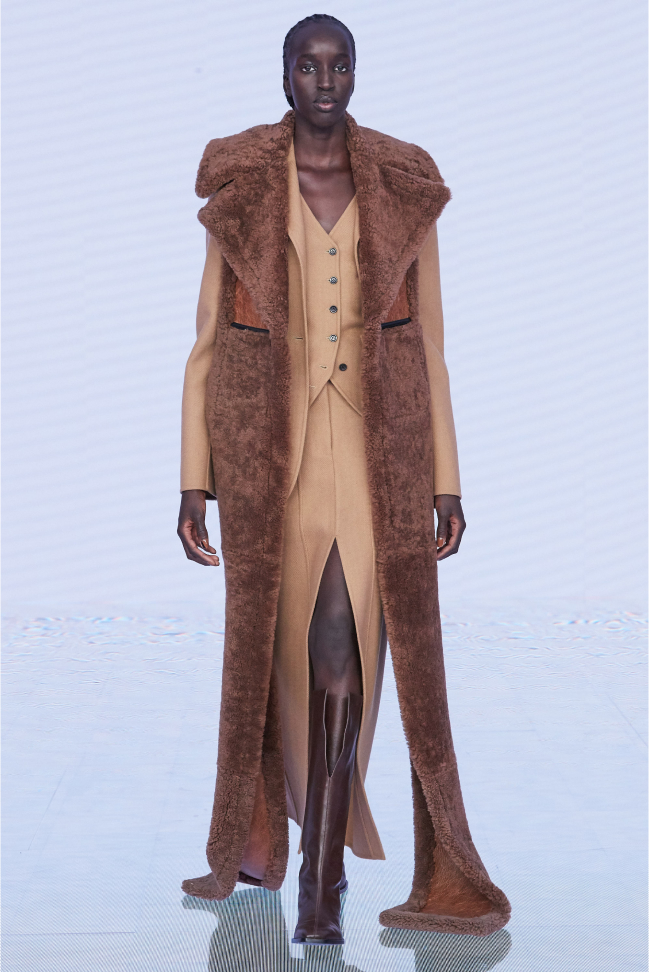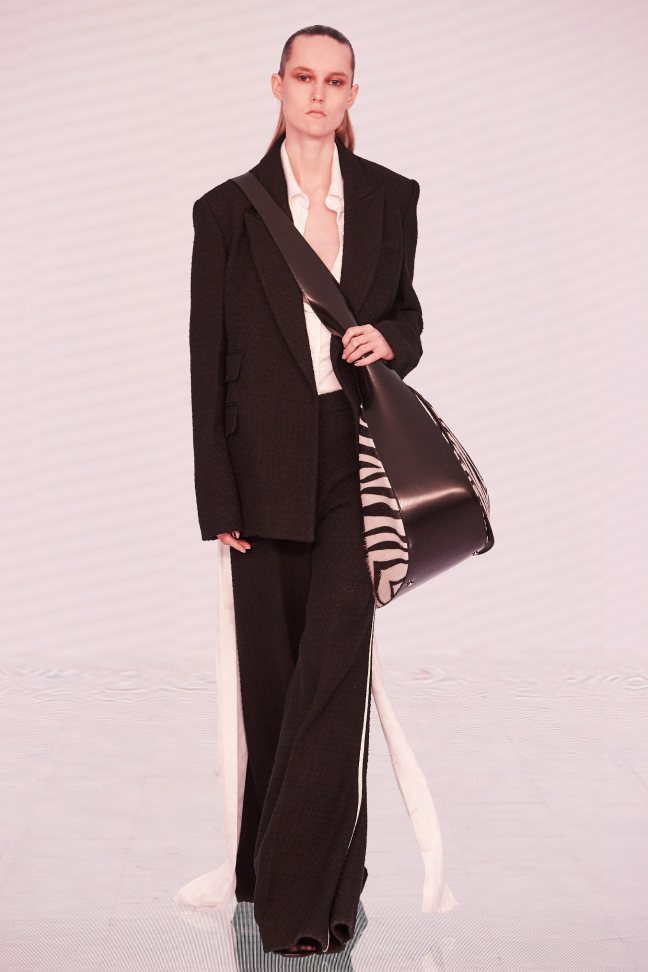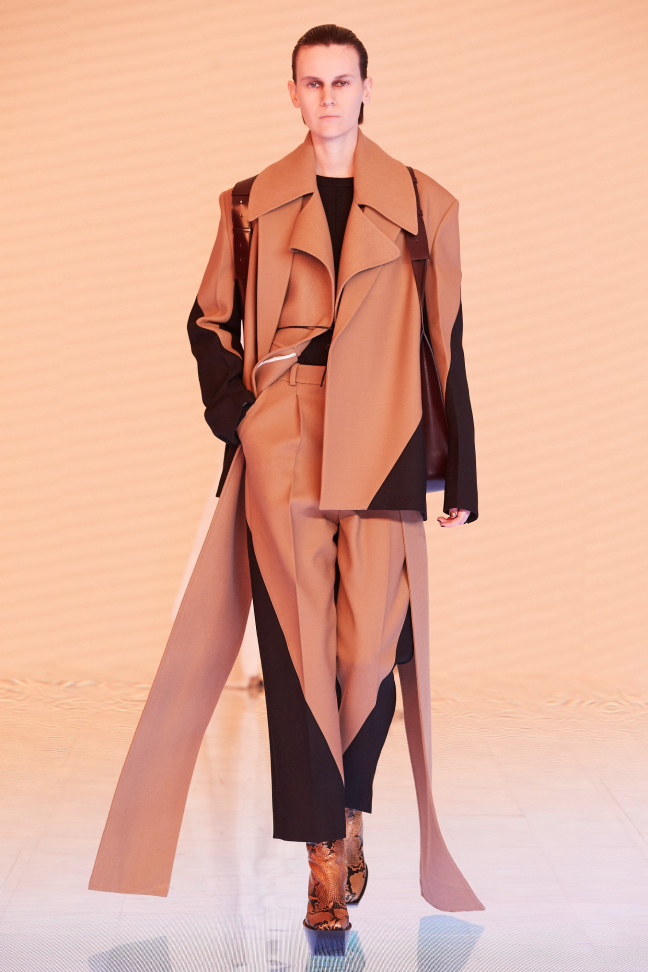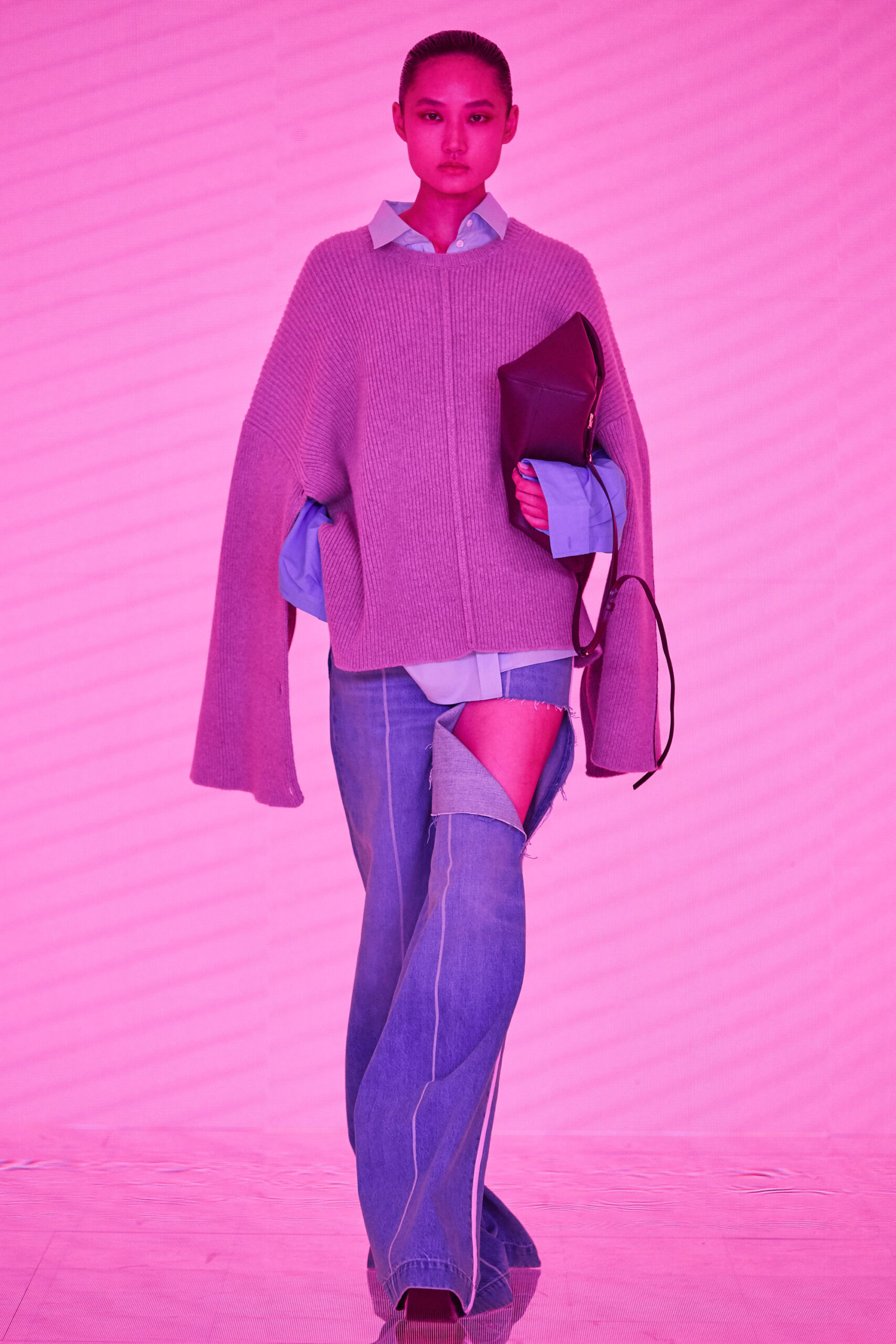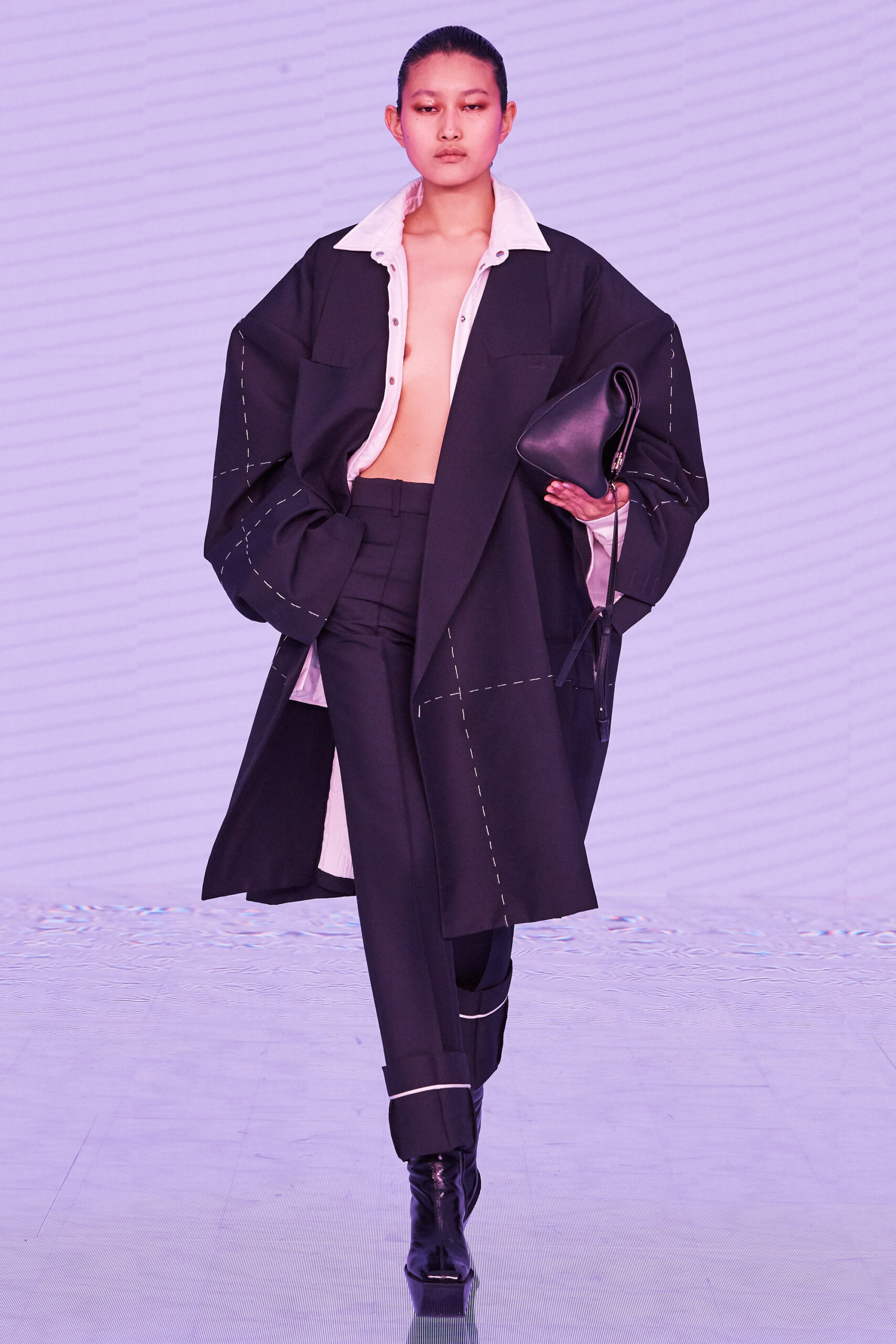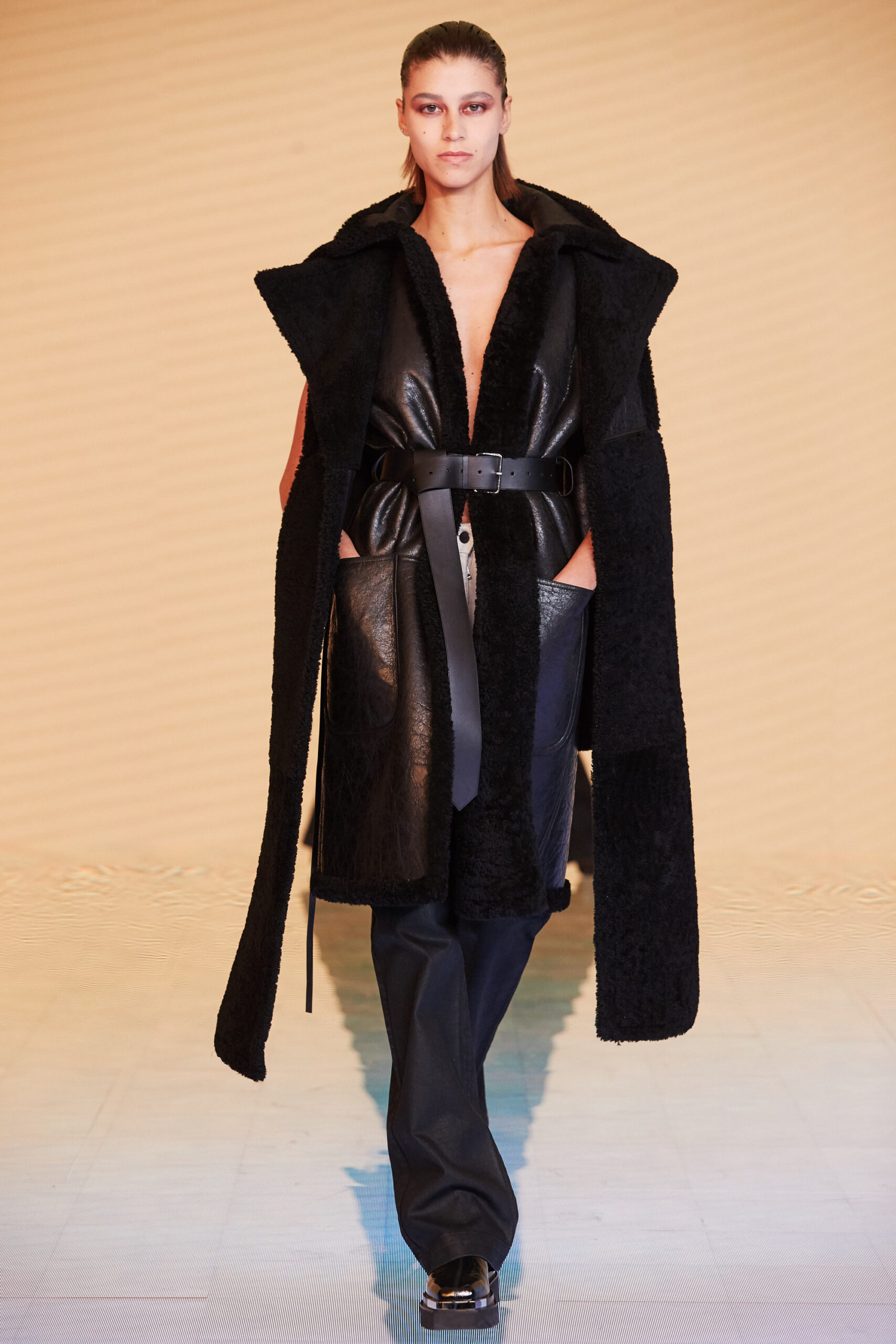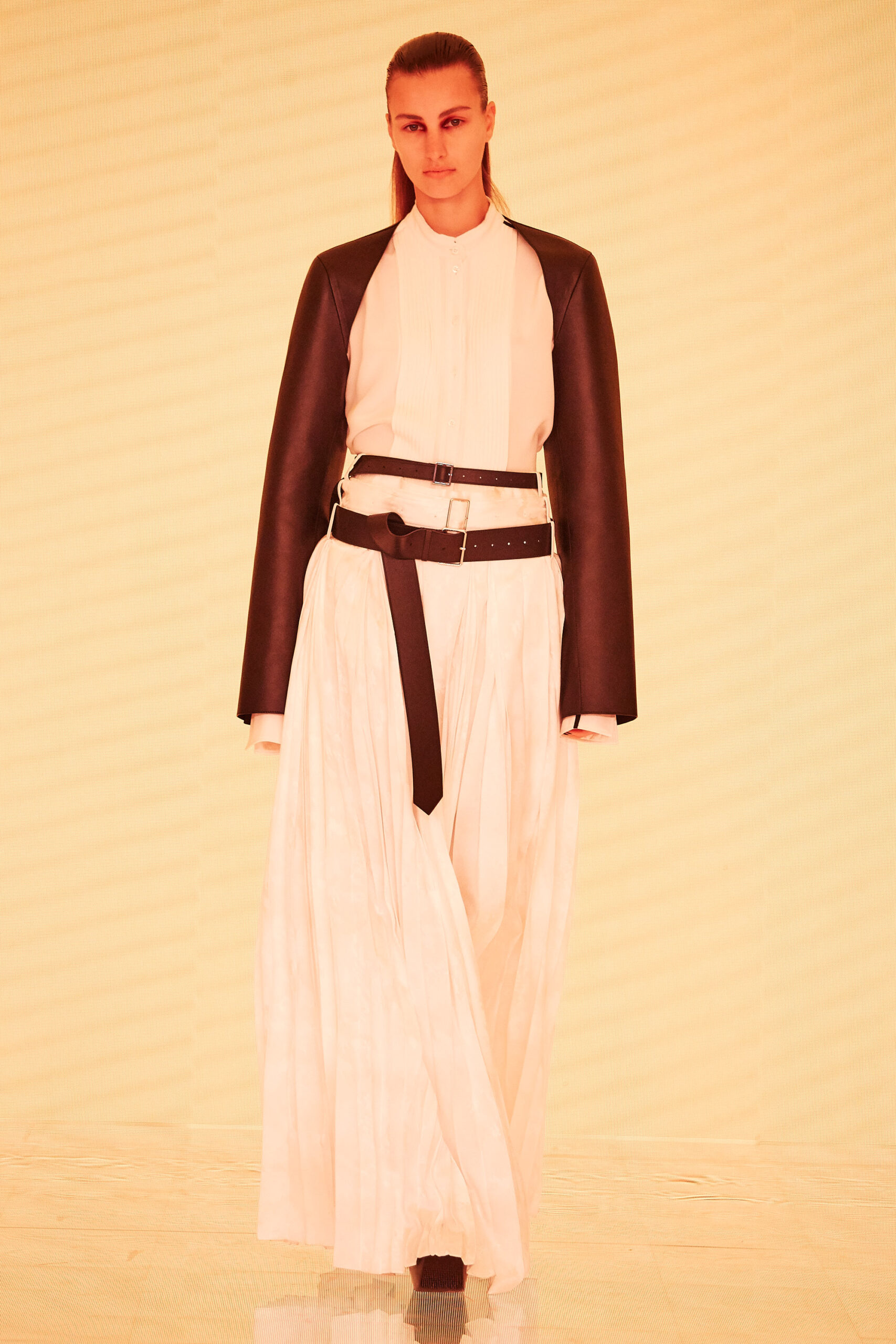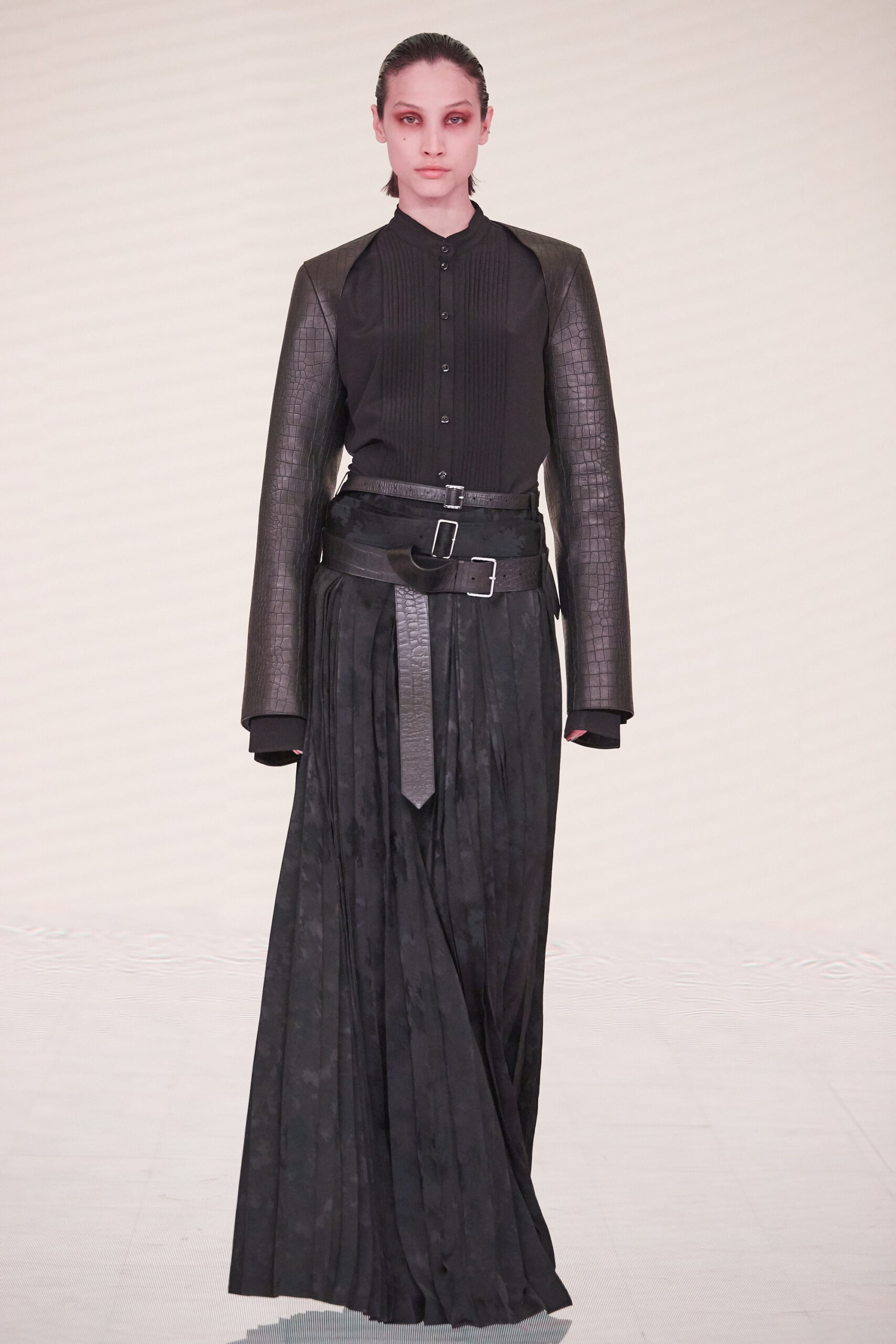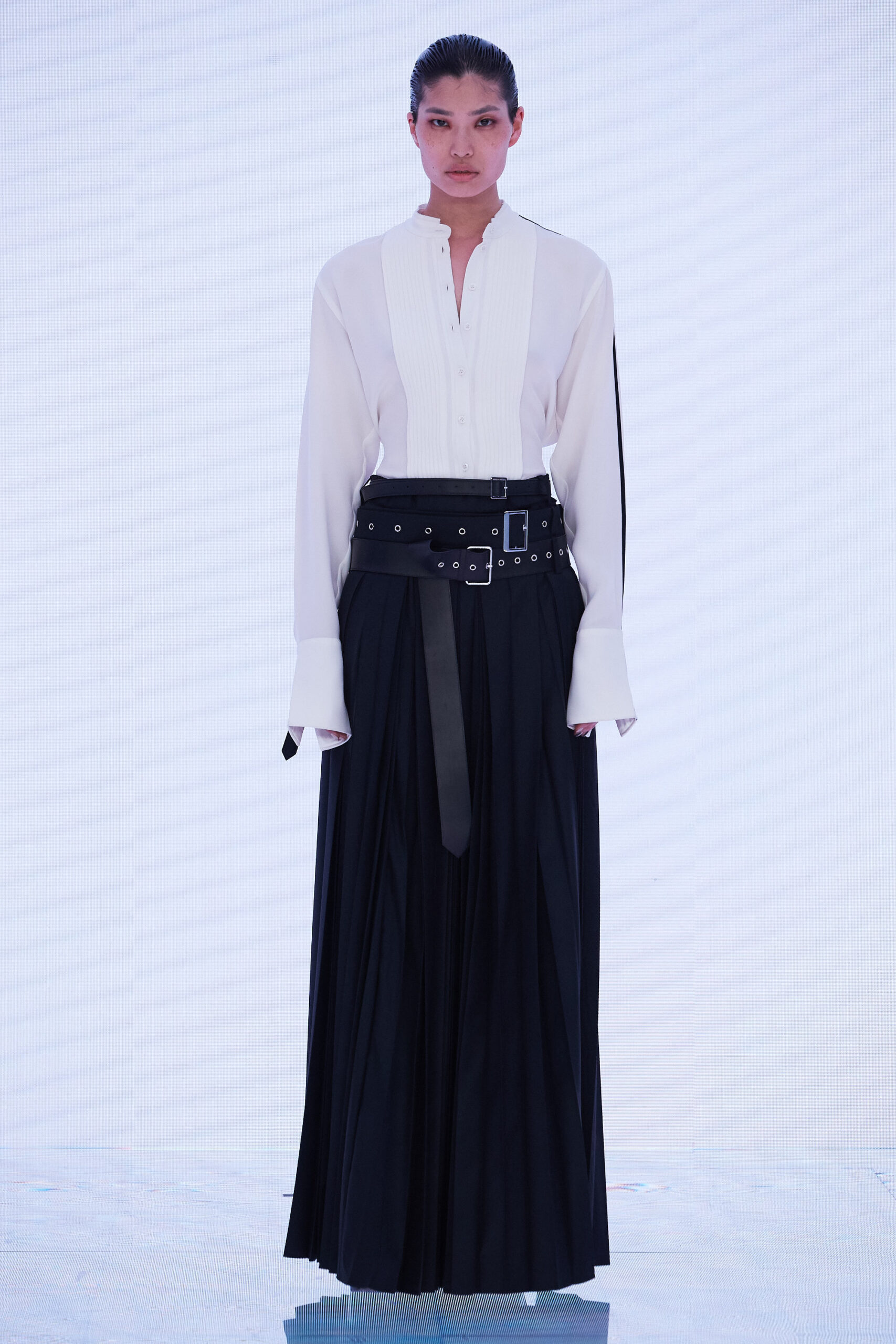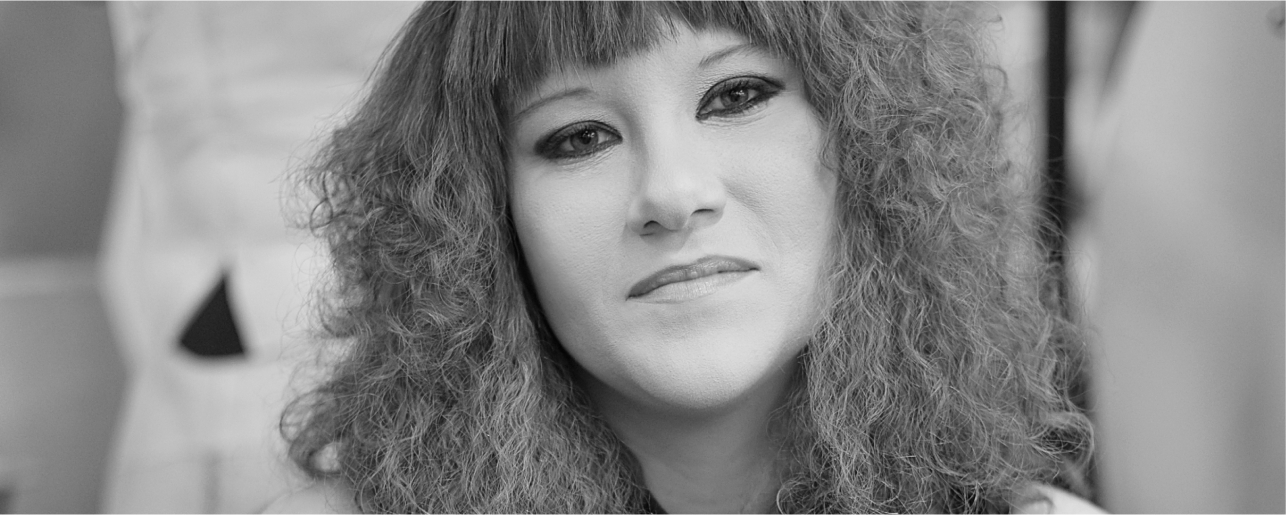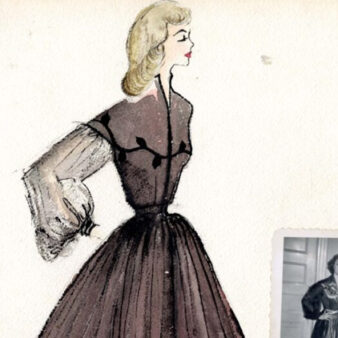THE NEW GUARD: FASHION DESIGNERS PETER DO ’14 AND MIMI PROBER ’12
Who’s the quintessential American fashion designer? Fashion being what it is, this changes with every era. No one designer is the sole embodiment of American style, but a few capture the zeitgeist in a special way.
In the ’50s, Claire McCardell (1905–58) acknowledged women’s changing roles at home, at work, and at play, with sportswear that was casual, comfortable, and practical. Halston changed fashion in the ’60s and ’70s, creating simple, elegant silhouettes, and bias-cut dresses and pants that were perfectly proportioned and perfectly modern.
From the 1970s on, Calvin Klein and Ralph Lauren—two Bronx-born sons of Jewish immigrants—could legitimately claim the “American designer” mantle. Klein, a 1963 Fashion Design alum, made his mark with slinky minimalism and provocative ads that were as influential as his clothes. Lauren upscaled the cowboy look, with artfully faded jeans and flowy prairie skirts shown on outdoorsy models. His Polo brand went full Americana by putting the flag with its original 13 stars and stripes on a sweater.
Klein left his company 20 years ago, while Lauren, 82, remains executive chairman of his firm. Both venerable brands carry on, along fairly familiar paths. Meanwhile, American fashion, like America itself, faces daunting challenges. Inevitably, new ideas, materials, and designers will emerge.
So, who’s the next great American designer?
That designation was bestowed on Peter Do ’14, a 30-year-old New York–based immigrant from Vietnam, by New York magazine in 2021. With a team of collaborators, all of them Asian American, he creates sophisticated looks that are making their way onto red carpets and into fashionistas’ hearts.
Mimi Prober ’12, like most of today’s young designers—and consumers—is committed to sustainability. Her patchwork jacket is on view in The Met’s exhibition In America: A Lexicon of Fashion. No minimalism here: Her pieces layer details, embellishments, and history into garments that are fresh while also evoking the past.
What’s next? We’re not psychic, but we think these two alums are staking a claim to the future of American fashion. The following pages tell you why.
IS PETER DO ’14 THE NEXT GREAT AMERICAN DESIGNER?
·
Jul. 23, 2022
Peter Do does not do ball gowns. Roomy trousers with lots of swagger, yes. Sharp, knife-pleated skirts with irregular hems, yes. Sleek leather shifts with pockets, yes!
But when Instagram’s director of fashion partnerships Eva Chen asked the New York City–based designer to create her ensemble for the Met Gala—the ritzy benefit for the Metropolitan Museum of Art’s Costume Institute held each May—he couldn’t refuse.
Do and his team came up with a floor-length, cream-colored silk jacket with a dramatic train. Chen wore it over a short strapless dress and one of the brand’s signature asymmetrical wraparound pleated skirts. The jacket-gown had pockets, and the train—per Chen’s Instagram—had “three hidden finger loops sewn into it so I could navigate easily.”

“The end goal for me is always [to create] something that is useful and functional,” Do says of his designs, from his expertly tailored jackets to his more fanciful see-through blouses with ties and slits. “It has to be grounded in some sort of reality: Can you wear it more than once? Does it have pockets? Those are the questions I’ve been interested in since my student days.”
When Chen posted the result on Instagram, she extolled Do’s sartorial pragmatism. “We love a practical designer king,” she wrote.
Practical designer kings (and queens) used to rule New York fashion: Halston and his simple Ultrasuede or jersey dresses, Calvin Klein and his cool minimalism, Donna Karan and her ingenious mix-and-match “seven easy pieces” wardrobe. Yet in the past couple of decades, they’ve pretty much disappeared. American fashion had either gotten fussier (arty experiments, couture-worthy dress-up clothes) or sloppier (streetwear, sweats).

“I’ve been thinking about what it means to be an American designer lately,” Do says. “I think it’s that ability to take things from other places and make them comfortable and functional, but I think we’ve gone too far. It’s maybe too comfortable!”
That’s why Do’s label—elegant, adult, and polished, with a bit of an edge—has struck a chord. After stints at Celine, in Paris, and Derek Lam, he started the label with four friends in 2018. Last year, New York magazine crowned him “the next great American designer.”
Christopher Uvenio, an FIT fashion professor who had Do for his AAS portfolio class, agrees with that pronouncement. Uvenio says, “Do is the Halston of the next generation.”

Do was born in Biên Hòa, Vietnam, and moved to Philadelphia with his family when he was 14. At his new high school, his American classmates made fun of his out-of-date hand-me-downs, and he quickly saw clothes as a way to assimilate and “survive,” adopting an anonymous style.
“I noticed that the moment you change up how you dress, you can pretend to blend into society,” he says. “It was my coping mechanism.”
Do first became interested in fashion through his high school art club. Project Runway was growing in popularity, and Do thought the club could stage a fashion show with clothes made of discarded materials to promote sustainability. His mother bought him a sewing machine for $20 at Kmart, and Do taught himself how to sew dresses out of napkins and trash bags.
“No one would wear the stuff I made,” Do says of those experiments. “But it made me realize that I really loved making clothes.”
He initially enrolled at Brooklyn’s Pratt Institute—“I was really intimidated by Manhattan,” he confesses—but he got frustrated by all the theory classes the first year. “We weren’t making clothes; we weren’t draping,” he says. When he decided to switch to FIT, friends warned him that it was a “technical” school. “I was like, that sounds great!” Do says with a laugh.
His first year at FIT was really tough, he says. “You’re sewing all the time. There are so many projects, so many different types of techniques and constructions. It was almost like boot camp.” Still, Do progressed quickly. His hunger for knowledge and feedback prompted him to create a Tumblr account, where he began posting process photos of his designs for class, and eventually amassed 50,000 followers.
“I knew from the day he walked into the classroom that he was a star in the making,” Uvenio says. One assignment required 10 to 20 thumbnail sketches for a collection; Do came back with 40—all beautifully rendered. “He took his work very seriously. His portfolio was so beautiful and well-researched it could have been a coffee table book.”
Do’s aesthetic was already sleek, sophisticated, and modern: white vinyl raincoats and hand-painted jackets worn with severe black turtlenecks. As a student, he won a CFDA scholarship, a critic award for his senior thesis collection—for which he whipped up an astonishing 20 looks—and the inaugural LVMH Graduates Prize, a major honor that landed him a job at Celine, in Paris.
As much as Do learned from Celine director Phoebe Philo and, later, the New York designer Derek Lam, he chafed at the lack of creative freedom. “I wanted full control. I didn’t want to work so hard for it to be just a part of someone else’s vision,” Do says, adding that it was particularly hard to have a garment that he poured his heart and soul into dismissed or passed over. “It was a really difficult experience. I just wanted to be free, completely free, to do what I want.”
On nights and weekends, he and four friends—including fellow FIT grads Jessica Wu, Advertising and Marketing Communications ’16, Fashion Merchandising Management ’14, who styled Do’s senior thesis collection; and his longtime roommate Lydia Sukato, Fashion Design ’14—hatched a plan for their own fashion brand. (Do met his other two collaborators, Vincent Ho and An Nguyen, through Tumblr.) The five founders—all Asian American—share ownership of the business, which is run as a collective. Wu handles press, Sukato is the operations manager, Ho is CEO, and Nguyen is the image director.


“To build a brand or company, you need more than one person,” Do explains when asked about the “collective” business model. “I feel like for so long, there’s this narrative in fashion that a designer starts a brand [by themselves] and then it just happens. But I know this would never happen if there wasn’t a team behind me.”
In February 2018, they launched a line of T-shirts; by June, they showed a full collection to buyers in Paris.
“We were a bunch of kids—we were so naive,” Do recalls from that trip. “We didn’t understand how these things worked. We just figured everyone would be in Paris [for fashion week] and that we would just go there.” They got cheap plane tickets, rented an Airbnb, and showed up with no appointments. When their fit model couldn’t get into France, press agent Wu donned the clothes. Amazingly, Net-a-Porter, who had seen Do’s clothes on Instagram, bought the entire collection. “We honestly just got lucky that it all worked out!”
Nearly four years later, Do’s star is still rising. Beyoncé, Solange, and Zendaya have worn his clothes, and First Lady Jill Biden’s office has asked for pieces. In 2021, he made his New York Fashion Week debut; that November, the CFDA nominated him for Womenswear Designer of the Year.

Do loves that people want to wear his designs but dreads the attention that comes with such success. He actively avoids the limelight. In photos, he obscures his face by wearing a balaclava, putting his hands out in front of him, or merely looking away from the camera. He often brings team members to press interviews. At the 2022 Met Gala, while he dressed Eva Chen and K-pop star Johnny Suh, Do walked the red carpet in a mask and shades (and a chic deconstructed suit).
“I feel like I expose myself so much with the brand that I want to keep something for myself,” he explains. “I want to have something that’s private, that only the people who know me know. Though I don’t know how long I can keep [that] going.”
After all, Do—who loves clothes so much he even designs in his dreams and will sometimes create those garments when he wakes—plans on staying relevant for many years. His label continues to evolve. He has not wavered from his initial tailored, grown-up aesthetic; his four-piece suit, which includes a jacket, vest, skirt, and pants that can be worn in various combinations, remains a perennial hit. But lately he has loosened up. His fall 2022 collection featured snuggly sweaters and capes (in a soft, washable wool) and ripped, wide-legged jeans.
“When I first started out, I felt like I had a lot to prove, and things were really structured,” Do says. “But now, I feel like people know us for our tailoring, so I’m getting softer. I’m exploring a different side of strength.”
He has a growing number of custom clients—particularly men who want versions of Do’s women’s wear that will fit them—and hopes to have some kind of physical presence in New York, a store or hangout for fans.
“I want to meet the people who wear the clothes—I’m interested in their stories,” Do says. “And I want to know, ‘Is this too much? Why don’t you want to wear this? What do you need?’ That way, I’m making clothes that people actually need and not clothes that I just assume they need.”
Mimi Prober, Fashion Design ’12, still has one of the showstoppers she made for her critic award–winning senior thesis collection—an ethereal gown made with scraps of antique lace and a vintage corset.

“Misty Copeland danced in it,” Prober says, referring to the American Ballet Theater star, who donned the dress while whirling about en pointe for a photo shoot. Several other women have put it on since. Most recently, singer-songwriter Alexa Ray Joel, a client and good friend, wore it at an event right before the coronavirus pandemic hit New York, in 2020.
“It’s had a history,” Prober says.
You can say that of all of Prober’s pieces. The Miami-born designer stitches and drapes antique lace, 19th century friendship quilts, and vintage woven textiles into exquisite “modern heirlooms”: funky patchwork motorcycle jackets, exuberant embroidered tapestry coats, delicate-but-tough tie-dyed neo-Edwardian lawn dresses. (She uses every last scrap of fabric, leaving no waste.) Each element has its own unique story and tie to the past.

She credits her French-Moroccan grandmother for her love of old things. “She always had the most fabulous vintage pieces,” Prober recalls. “Her original clothing from when she was in Morocco was custom made from a family seamstress, and I think she carried that appreciation and value of the handmade to me.”
In high school, Prober enrolled in fine arts, and mainly did abstract painting and some collage, but in her spare time she haunted thrift stores, searching for discarded treasures she could deconstruct and transform. She continued to work that way at FIT. While her classmates went to Mood for their fabrics, Prober attended auctions, searching for hand-stitched lace from the 18th to early 20th centuries, which she used for her romantic dresses.
“Sustainability wasn’t really defined [at that time],” Prober says. “It was kind of like an intuition for me.”

Since launching her eponymous label in 2014, she has expanded her zero-waste methods beyond vintage materials. Now she works with artisans, farmers, and mills to create her own textiles, too—always with an eye toward the past, such as a recent collection of T-shirts screenprinted with the poster art for a 1971 “Return of Spring” concert featuring the Grateful Dead and others that her “hippie” father created and produced.
“The vintage textiles are very important—and they’re near and dear to me to preserve that history,” Prober says. “But I also want to make sure we’re bringing it forward and preserving these crafts.”
Antique bedclothes
One of Prober’s most prized possessions is an antique handwoven coverlet, dark blue with a cream floral pattern, signed and dated 1835. “What’s really special about these coverlets is they were woven on large floor looms in the 1800s, sometimes woven by families or traveling weavers,” who passed down the craft from generation to generation, Prober says. But since they’re close to 200 years old—and have likely covered several beds—they’re a bit time-worn.
Prober preserves these coverlets and turns them into luxurious coats, which remain some of her best-selling items. One example has the weaver’s signature and the year 1842 stitched on the corner. It’s definitely a statement topper. “It makes such an impact and hopefully will pass on from generation to generation, too.”
Farm-raised felt

Prober works with various artisans and farms to create textiles and natural pigments, including Japanese indigo grown on an upstate New York farm belonging to Jeffrey Silberman, retired professor of Textile Development and Marketing.
For her soft hand-felted coats, she uses wool from the paco-vicuña, similar to an alpaca, raised on a family-owned sustainable farm in Missouri. “They’re not only super, super sweet, but they have the softest fiber,” Prober says. “In the textile world, it’s as valuable as gold.”
Prober ships the paco-vicuña fiber to an upstate New York farm to create a unique hand-felted textile that has some of her antique lace bits embedded within. “I go to the farm to hand-felt, and it’s just a beautiful experience to really see where your fiber comes from,” she says. Nomi Kleinman, chair of the Textile/Surface Design Department, wove one of these paco-vicuña garments for Prober. “Obviously my connection with the school didn’t end at graduation!” Prober says.
Crazy quilts
“If I were to pick a textile that says everything about our philosophy, it would be the crazy quilt. … It’s really the first zero-waste textile.”
Crazy quilts—made primarily by women starting in the 1800s—comprise leftover scraps of other textiles and quilts, intricately pieced together. These quilts can take years to finish, and often include signatures and other mementos that make each finished product idiosyncratic and personal. “It’s just such an important textile,” Prober says. But while the best of these quilts now hang in museums, plenty more are too worn, frayed or damaged to be displayed on their own. Reviving these much-loved pieces and the tradition they come from “is really special to me,” Prober says.
Prober used portions from two 19th-century crazy quilts to create a patchwork motorcycle jacket, displayed through September 5 in The Metropolitan Museum of Art’s exhibition In America: A Lexicon of Fashion.
“I liked the idea of bringing an antique textile into a classic modern silhouette,” Prober says of the jacket. On the front is an embroidered “M”; on the back is the date 1913, from one of the original quilts. “I love when I find [pieces] with my initials [on them].”

Lace fragments
Mimi Prober, the brand, started with lace. She keeps a collection of preserved antique lace in her atelier, including a sample made by a 10-year-old girl named Nancy Lovett around 1787.
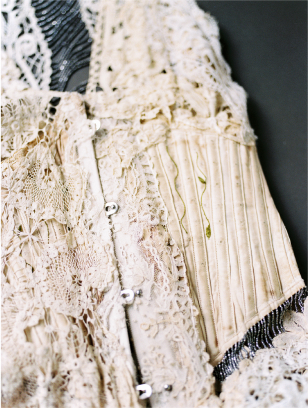
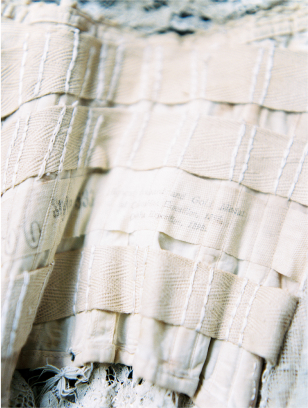
For her first corset gown, created at FIT, Prober stitched together dozens of lace snippets that she found at various auctions and shops along the East Coast, some dating back to the late 1600s. “These are tiny, tiny fragments,” she says. “There isn’t one textile on here that is newer than the 1920s, though most of it is from the 1800s.” She draped these bits onto a late-19th century corset that she spent hours preserving and restoring—hand-embroidering and reinforcing its structure using antique thread, a skill she learned in her haute couture techniques class at FIT.
The lace corset dress has become something of a signature style for the brand, and Prober released an updated take on the gown using natural-dyed lace in her latest spring collection.
“I think it says something that my thesis piece is still very meaningful to me,” Prober says. “It’s not something that’s been thrown in the back of my closet or up in an attic. It’s still very much alive.”
